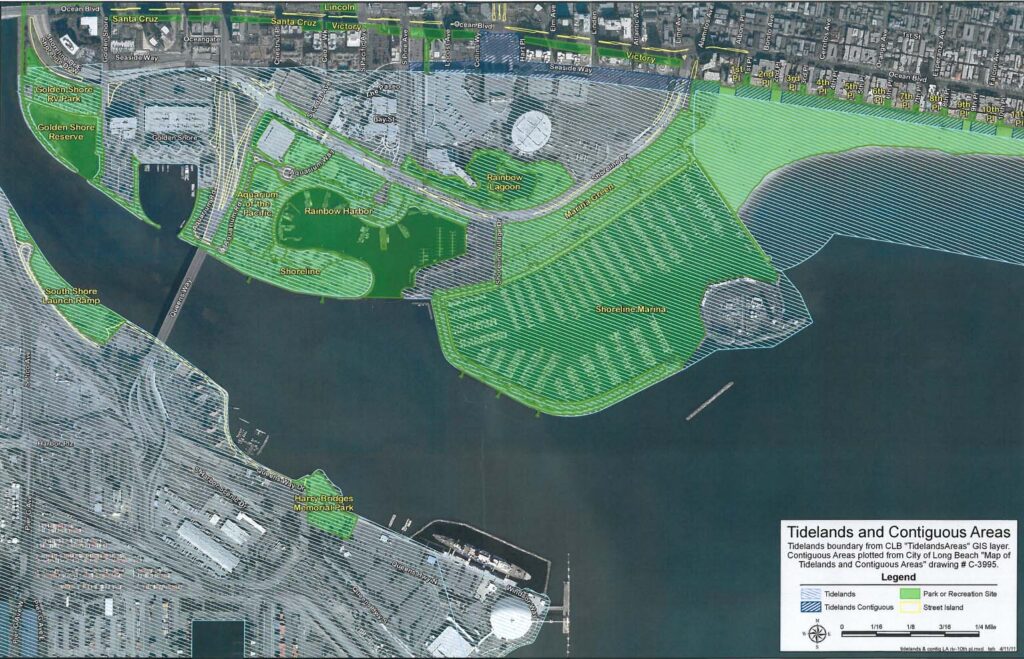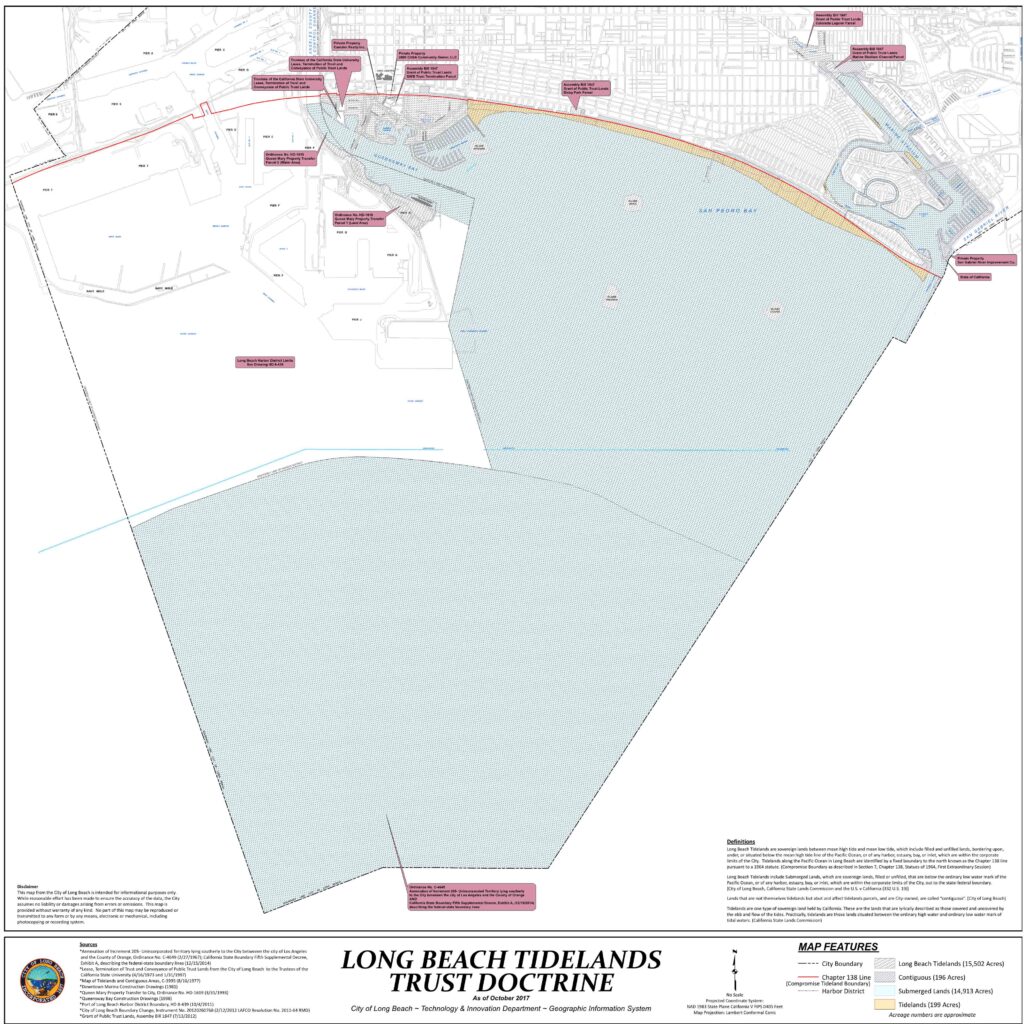By Dave Booker
California drew a coastal zone map and set up the California Coastal Commission to ensure public access to the coastal waters and beaches and regulate development within the coastal zone. Local Agencies were required to develop a Local Coastal Program which, when approved by the Coastal Commission, would allow the locals to control development in their part of the coastal zone. Long Beach has an approved Local Coastal Program … with one exception:
Only the Coastal Commission can approve development within any Tidelands.

So what are the Tidelands?
Long Beach Tidelands are lands between mean high tide and mean low tide , which include filled and unfilled lands , bordering upon, under, or situated below the mean high tide line of the Pacific Ocean, or of any harbor, estuary, bay, or inlet, which are within the corporate limits of the City. They extend 3 miles offshore.
Tidelands extend onshore in city owned parcels that abut the shore and are impacted by tides. These are called contiguous tidelands.
Long Beach was granted sovereign rights to these lands, including rights to the large oil deposits. The money from oil extraction has been a boon to Long Beach for a very long time.
Tidelands – City Departments and Budgets

The city groups their services in and adjacent to the Tidelands properties into Tidelands Funds Groups. The following is a list of the different funds groups:
Uplands Oil Fund – City Revenue from city owned oil operations and fees from oil operations. These include both Signal Hill and Tideland fields. 2020 budgeted revenue is more than $12 million, $8.7 million is transferred to Tidelands and General Funds.
Tidelands Operations Fund- Funds City services within the Tidelands. Beaches, police, fire, lifeguards. Convention center and capital projects are here too. Funding comes from parking, the oil fund, and from Port revenue. 2020 budget is $94 million
Tidelands Area Funds – Developed properties within Tidelands: Queen Mary, Aquarium of the Pacific, Rainbow Harbor, and Long Beach Marinas.
These funds are self-funding with revenue from rents and leases at Queen Mary, Carnival and Catalina Express terminals, and slip fees and in leases from marina businesses. The budget for these funds is $25 million.
Port Operations (Harbor Fund) – Covers the Long Beach Port Operations. Generates over $545 million in revenue. $20 million is budgeted to transfer to General and Tideland funds.
